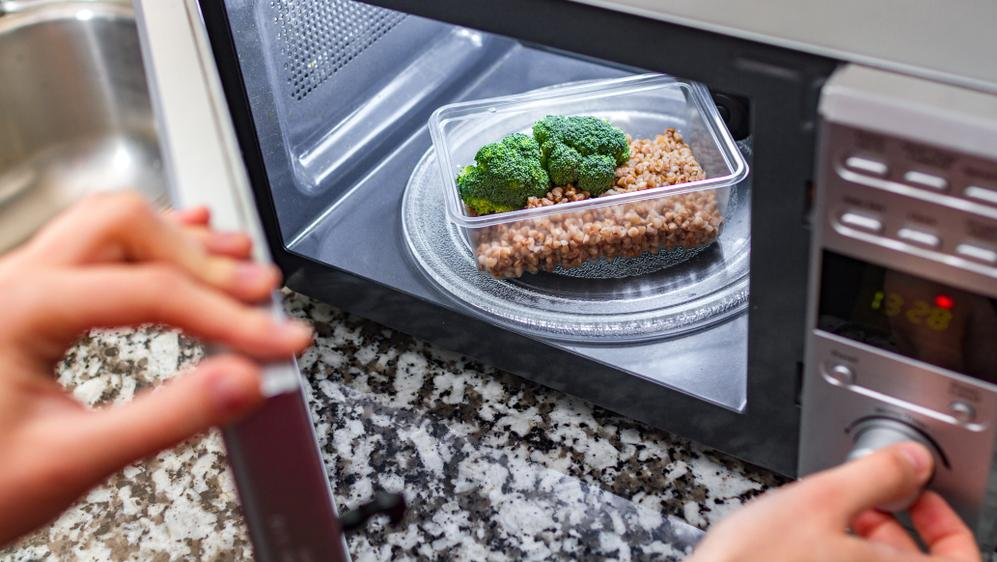'Microwave Safe' Plastic Might Be A Lie
Even the “safest” plastics might pose a risk to your health.
Placing leftovers in the microwave without taking them out of their plastic container isn't the worst offense. Many meals are made to be heated right inside their plastic packaging, too—but doing so might not be as safe as we've been led to believe, per a recent article from Bon Appetit. In fact, containers marked "microwave safe" could pose an even bigger risk because of how misleading their labels are.
A 2019 study found that the average person ingests around 50,000 microplastic particles a year. In addition to microplastic and nanoplastic particles, many of the chemicals used in food packaging, like BPAs and phthalates, can also be found in some measurable amount in most Americans' bodies. But since we're not all severely ill from ingesting these substances all the time, you might be lulled into feeling reassured that such plastics and chemicals aren't all that bad for us. However, experts say it's the long-term effects we need to worry about.
Why “microwave safe” plastic is a lie
We've all microwaved our leftovers directly in their takeout container, and thus we all have that one container with the stubborn, impossible-to-remove food stains. Whether the stain comes from a particularly flavorful salsa, pasta sauce, or some other highly pigmented dish, the fact that any bit of food was able to penetrate the container means the chemicals and microplastics from the container can also make their way onto (or into) your food.
The term "microwave safe" refers to the fact that the container will not melt or break in some way when heated—but that's not all we have to be concerned with when heating food-grade plastic. Though many people might reasonably assume it does, the "safe" label doesn't cover the fact that the container can shed microplastics into the food.
Kazi Albab Hussain, a PhD student at the University of Nebraska–Lincoln, conducted a study using reusable plastic containers and a polyethylene-based reusable plastic food pouch to determine how much nanoplastics and microplastics get into food via plastic containers. Hussain found that even when food is just stored in a plastic container (not heated in the microwave), millions to billions of micro and nano plastic particles make their way into the food. When the container is microwaved, the process is vastly accelerated.
Although further research still needs to be done, experts agree that ingesting these plastics and chemicals can, over time, have a negative impact on the body. The aforementioned BPAs and phthalates, for example, have the potential to interfere with the body's hormones, potentially leading to higher risks of infertility, some cancers, metabolic diseases, neurological conditions, and immune system dysfunction. As for the actual nanoplastics and microplastics collecting in the body, those can lead to inflammation and, based on further research from Hussain, possibly even cell death.
Are any plastics safe to microwave?
Most plastic containers are marked with a number between one and seven, corresponding to the type of plastic used for that container. James Rogers, PhD and director of food safety research and testing at Consumer Reports, explained to Bon Appetit that some plastics are more dangerous than others.
Rogers recommends consumers avoid plastics marked with a one or six, usually used for styrofoam takeout containers and other packaging with a low melting point and thus not a great candidate for the microwave. If absolutely forced to choose, Rogers suggests opting for types two and five, as they are made with a higher density formula, which means a higher melting point.
In the end, experts agree that avoiding plastic containers altogether is your best bet at avoiding long-term ingestion and exposure to microplastics. But as long as they're in the right container, there's definitely no need to avoid microwaving your meals.
